
Exhibited in 1930 at the “Autumn Exhibition” in the Budapest exhibition hall “Muchcharnok”. A girl with a unicorn is an allegorical image of purity. The undefiled martyr St. Justin was depicted with the same attributes. In the picture shown here, the main thing is not the religious content, but the exquisite, refined taste and the world view of the court-knight art that attract and capture even the modern spectator.
The main center of this direction was Lombardy, its influence spread, and in the middle of the Quattrocento era Venice did not escape it either. The Budapest picture in style resembles the work of Antonio Vivarini. Initially, it could serve as a decoration for a palace together with other three paintings, the themes of which were even closer to the ideas of the knightly circle. These three paintings belong to one master and are in Baltimore in Walter Art Gallery. They depict scenes from the life of Paris, and therefore their author, at the suggestion of E. King, was called the Master of the Baltimore History of Paris.
At one time they were attributed to Pisanello or to the masters close to him, then, following L. Coletti, attributed the brush to Dario da Treviso. Almost surely, none of them could be the author of these paintings; thus, it would be more correct to stay with the auxiliary name proposed by E. King.
The manner of writing, the originality of the color make it necessary to refer this master to the circle of Antonio Vivarini. The image of nature is lyrical. On the edge of the forest, which even in form is extremely similar to the forest in the works of that time, written under the influence of Venetian art, in a meadow resembling a carpet, an elegantly dressed lady sits in thought. The unicorn pricked up, as if sensing a danger. With the soft contours of the unicorn’s body, the texture of the lady’s clothes harmonizes, it balances the composition of the picture. The picture came to us, unfortunately, in a cut-off form.
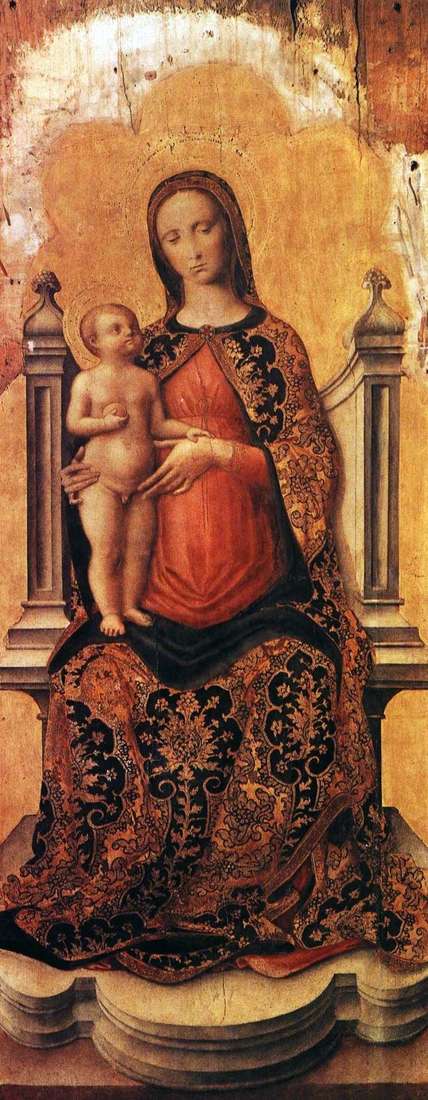 Maria with the baby on the throne by Antonio Vivarini
Maria with the baby on the throne by Antonio Vivarini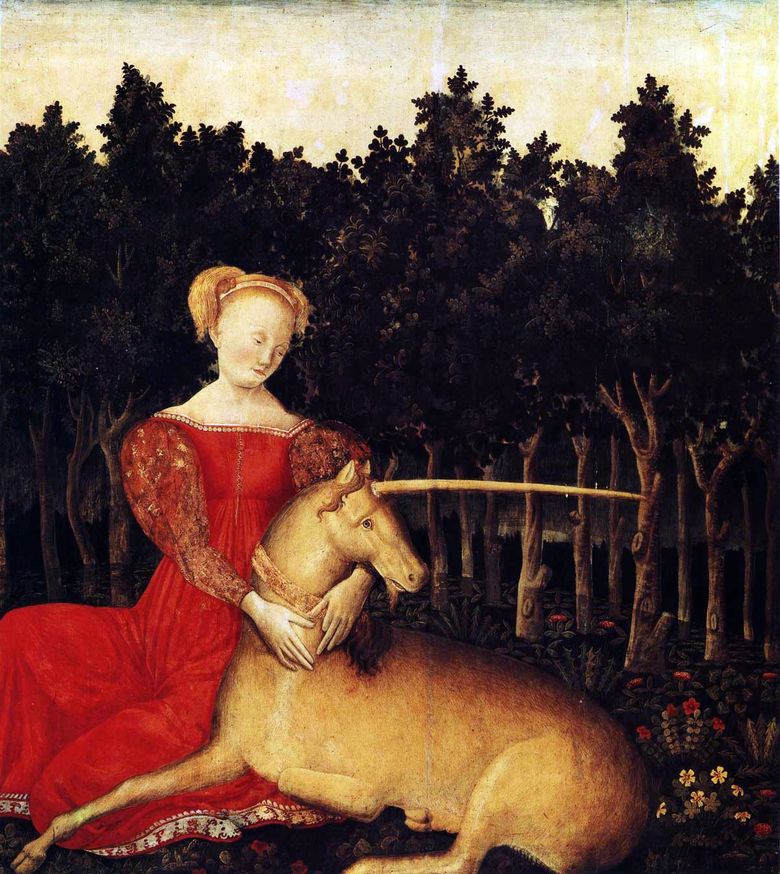 Fille avec licorne
Fille avec licorne Maria with a sleeping baby by Piermatteo da Amelia
Maria with a sleeping baby by Piermatteo da Amelia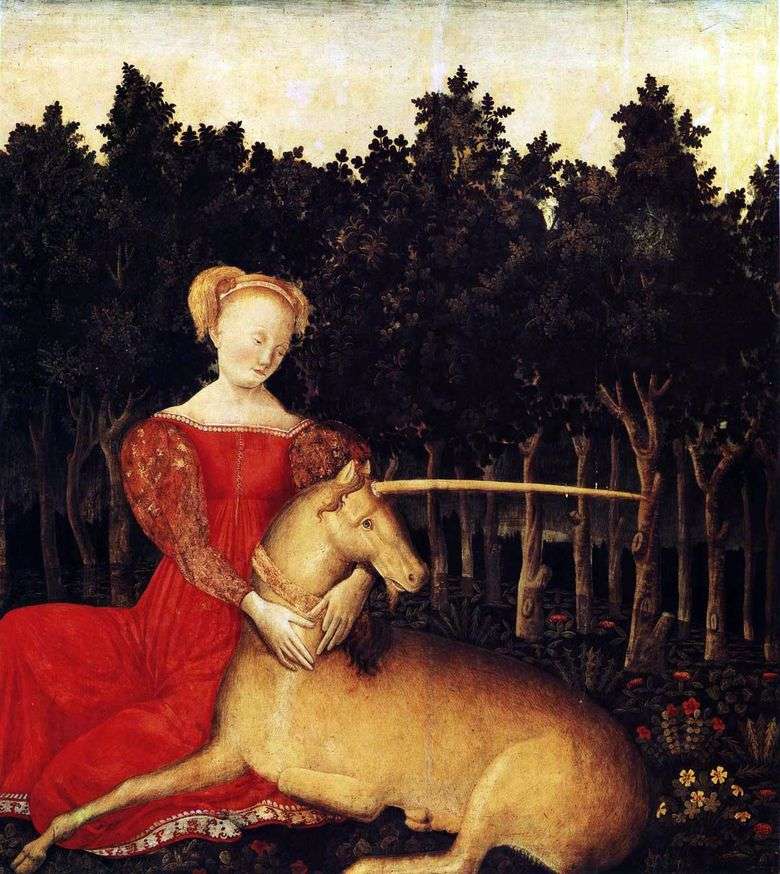 Chica con un unicornio
Chica con un unicornio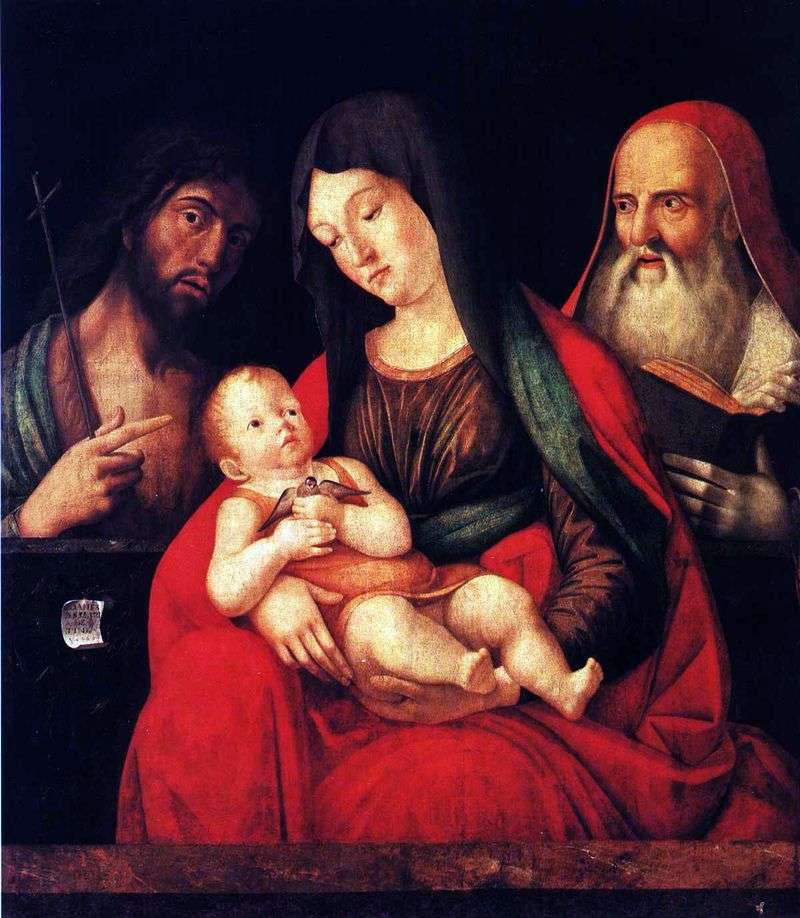 Mary with the Child, John the Baptist and Saint Jerome by Alvise Vivarini
Mary with the Child, John the Baptist and Saint Jerome by Alvise Vivarini Amazon on the unicorn by Boris Valedjo
Amazon on the unicorn by Boris Valedjo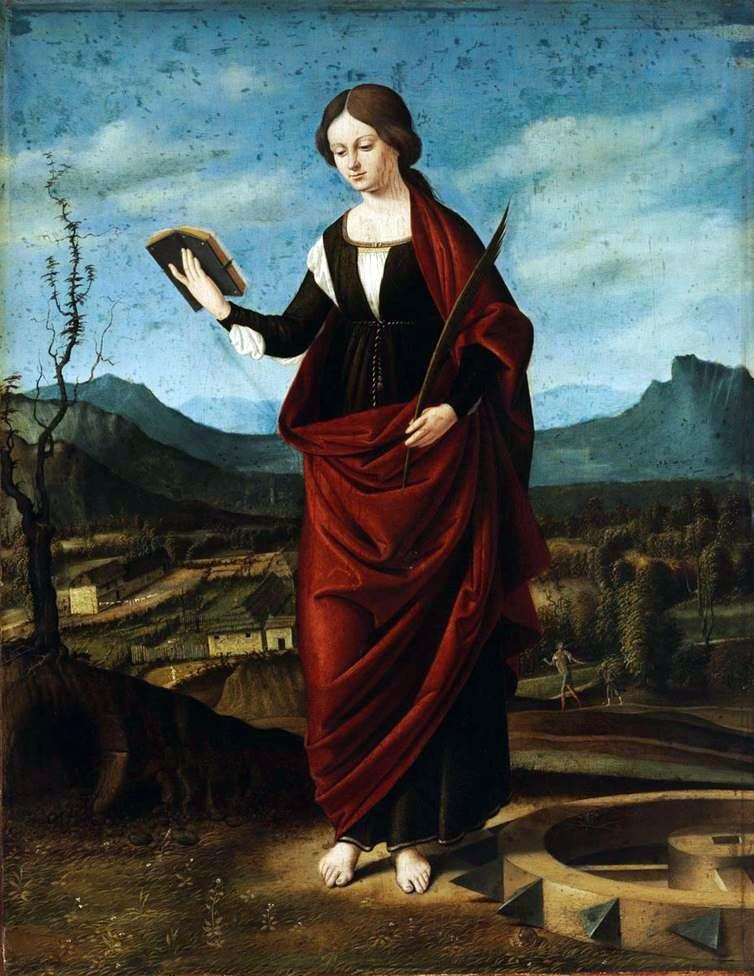 Saint Catherine of Alexandria by Marco Basaiti
Saint Catherine of Alexandria by Marco Basaiti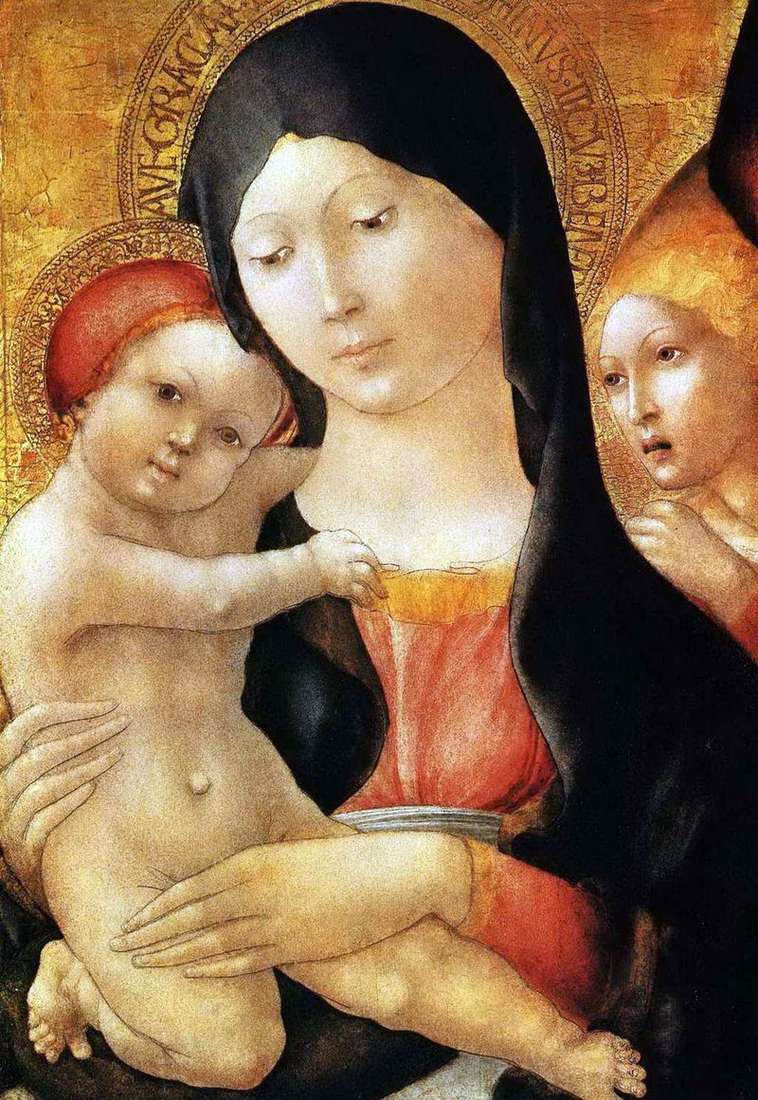 Maria with a baby and an angel by the Liberals and Verona
Maria with a baby and an angel by the Liberals and Verona